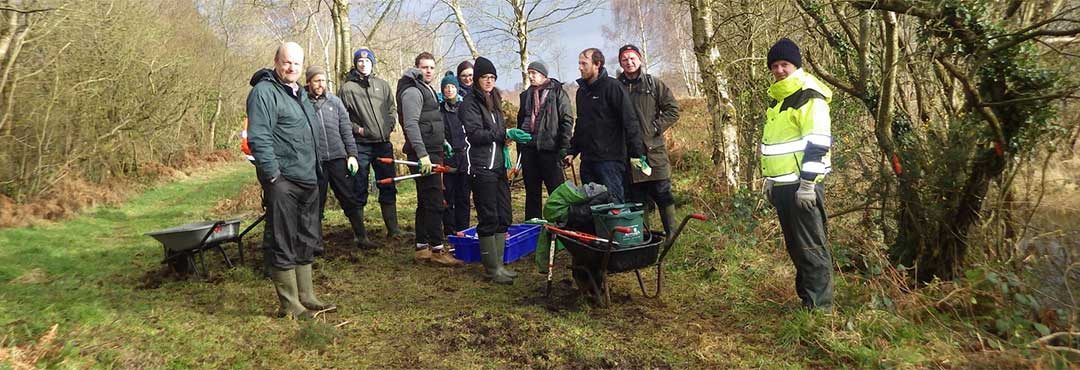The term lowland heathland refers to a wide range of habitats – dry, damp and in some areas, humid. It consists mostly of dwarf shrubs like heathers (Calluna vulgaris and Erica cinerea), western Gorse and trees such as Scots pine. It is generally found below 300 m (above it becomes moorland) and can be divided in two main different types:
- Dry lowland heathland – 75% of these areas are covered by Bell Heather, Heather and Western Gorse. The soil is freely-draining acidic and low of nutrient content.
- Wet heaths – Wetland health is widespread throughout Northern Ireland and typical plants are Cross-leaved Heath (Erica tetralix) and Purpel Moor-grass (Molinia caerulea). Black Bog-rush (Schoenus nigricans) can also be spotted in some places. On average a dwarf shrub cover of about 50-75% is usual for wet lowland Heathlands.
European lowland heath is distributed along the Atlantic coast of western Europe and the North Sea – UK, Germany, France, Netherlands and Denmark. In Northern Ireland about 5000 ha of lowland heathland still exists. Lowland heaths provide an important habitat for many rare species of plant and animal, some of which only live in these areas.
Historical info about Lowland Heathland
There is some debate about when lowland heathland developed but most estimates date back to around the stone age, about 3500BC, when settlers began to clear some of the wooded areas that covered the country in order to grow crops and raise animals. Grazing animals have been an important factor in the development of lowland heathland as their grazing prevented the areas from reverting back to woodland.
Heathland became an important part of the rural economy as it provided fuel, bedding for animals and grazing land.
Over the last centuary, heathland as been seen as wasteland or land for development, and it’s value as an important habitat has been overlooked, meaning much of it has been lost to housing or intense agriculture.
Species living in and around Lowland Heathland
Lowland heathland is a very important habitat for invertebrates, e.g. the Keeled Skimmer Dragonfly (Orthetrum coerulescens) and the water beetles (Paracymus scutellaris and Laccobius atratus).
Important and endangered species like Curlew, Irish Hare, Chough, Marsh Fritillary Butterfly and Skylark can also be spotted.
Threats to Lowland Heathland
- Lowland heathland is extremely dependent on favourable management techniques, as left to its own devices, trees and shrub seeds will germinate and it will quickly develop into woodland.
- Overgrazing – while grazing is an important management technique as grazing animals eat the young shoots of plants and shrubs and prevent the area turning into a forest, overgrazing is a major problem which can have the effect of turning this important habitat into an acid grassland.
- Nutrient enrichment – whereby farming nutrients escape onto the area and turn the area into acid grassland.
- Loss of habitat to agriculture, housing and other forms of development.
- Invasive species – Bracken, Gorse and scrub are two heathland species which have become a problem, due to lack of grazing to keep them under control. Also, rhododendron and gaultheria are two very invasive exotic species which commonly escape from gardens and take over natural areas, shading and excluding the native species.
- Recreation – Paths for visitors can reduce biodiversity in these areas, as can horse riding, trampling and off road cycling etc.

